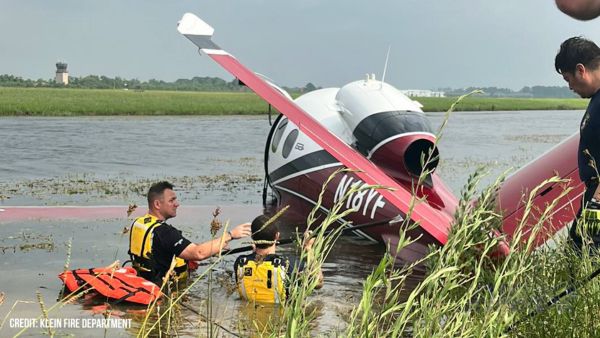Mon, Dec 23, 2019
Duncan Aviation Urges Pilots And Owners To Be Sure They Are Compliant
During the past several years, Duncan Aviation has encouraged aircraft owner/operators who upgraded to Automatic Dependent Surveillance-Broadcast (ADS-B) prior to 2015 to make sure they’re in compliance with the FAA’s ADS-B mandate. The FAA’s mandate deadline is 12 days away and goes into effect at midnight on Tuesday, Dec. 31. It specifies transponders must be manufactured or upgraded to the DO-260B standard.

If you upgraded to ADS-B prior to 2015, it’s likely the transponders were manufactured to the DO-260/260A, which was an earlier requirement for flying in Australia and other parts of the world. The version the FAA adopted for the flying in United States airspace is DO-260B. The DO-260B standard was adopted because it eliminates latency and adds annunciation requirements. This standard was later accepted as the worldwide standard by all civil air authorities. Collins’ transponders with part numbers ending in -409 and below are not compliant with the mandate and will need to be upgraded.
“The good news is if you’ve upgraded to the DO-260A standard, you’re typically Wide Area Augmentation System (WAAS)-compliant, so you have the antenna and GPS sensors necessary and will need only the transponder upgrades,” says Regional Avionics Sales Manager John Spellmeyer.
One way you can make sure you are compliant with the ADS-B mandate is to check to see if your emitter is broadcasting signals regarding your aircraft’s position, speed, location in relation to other aircraft, and other information to Air Traffic Control and other aircraft in the area where you’re flying. The FAA issued a report earlier this year warning that there was a high rate of non-performing emitters (NPEs).
Many of the aircraft with NPEs were likely installed more than four years ago or prior to changes made in the mandate and implemented over the years after its initial announcement. Some, however, may be a result of an improper installation or equipment configuration. Here are some common reasons the emitter may not be transmitting:
- Incorrect software version or improper configuration. Either issue can reduce the accuracy of the aircraft’s position
- Incorrect emitter category. This happens when the ADS-B system transmits the wrong emitter category based on its maximum take-off weight
- Incorrect Flight ID. This happens when the aircraft’s registration for Mode S doesn’t match the Flight ID
- Transmitting airborne data. An error when the signal is transmitting but the aircraft is on the ground
- Test Your Compliance Before The Deadline
Roughly one hour after a flight, go to the FAA’s website and request a Public ADS-B Performance Report (PAPR). The PAPR helps you verify that your ADS-B equipment is functioning properly.
If you are unable to determine whether your AC is in compliance, send an email to the FAA (9-AWA-AFS-300-ADSB-AvionicsCheck@faa.gov) and include the following information:
- Aircraft registration number (N-number) in the Subject line
- In the body of the email, include:
- Flight identification code
- Flight date & time
- Make/model of ADS-B transmitter and GPS
- Any ADS-B avionics operating abnormalities you have observed or reported during the flight
You should receive a report from the FAA showing what parameters of your system have failed.
More News
“Warbirds in Review features veterans, aviation legends, and aircraft that simply cannot be seen together in one place anywhere else in the world. Many of these veterans main>[...]
Also: VAI v Anti-Heli Actions, Electric Aircraft Symposium, 2024 FAA Drone/AAM Symposium, Gravitymaster Blue Origin's seventh passenger flight ended with a smidgeon of drama when o>[...]
“The importance of this YF-16 paint scheme is celebrating 50 years of the F-16 Viper. Everyone at Edwards has a big sense of pride for not only supporting the Viper Demo Team>[...]
Aero Linx: National Aeronca Association We are dedicated to supporting the design and preserving the history of Aeronca aircraft. Founded by Jim Thompson and fostered by his leader>[...]
Klyde Sounds Like He's Defining An 'Influencer' FMI: www.klydemorris.com>[...]
 Aero-News: Quote of the Day (05.25.24)
Aero-News: Quote of the Day (05.25.24) Airborne 05.22.24: NS-25 Chute Failure, #HonorTheWASP, SkyCourier 'Combi'
Airborne 05.22.24: NS-25 Chute Failure, #HonorTheWASP, SkyCourier 'Combi' Aero-News: Quote of the Day (05.26.24)
Aero-News: Quote of the Day (05.26.24) ANN's Daily Aero-Linx (05.26.24)
ANN's Daily Aero-Linx (05.26.24) Klyde Morris (05.24.24)
Klyde Morris (05.24.24)



